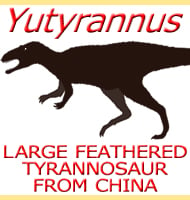Xuanhuaceratops
In Depth Xuanhuaceratops represents the early ceratopsian form that was a small probably bipedal dinosaur that had developed the sharp cropping beak as well as the rudimentary beginnnings of the neck frill that would become so characteristic of the ceratopsians. Because of its small size Xuanhuaceratops probably had to rely upon speed and agility to … Read more

